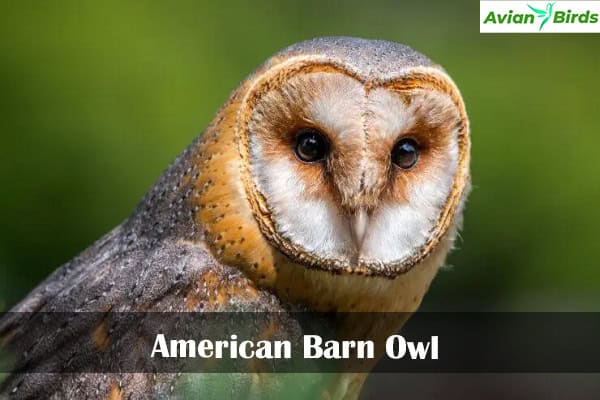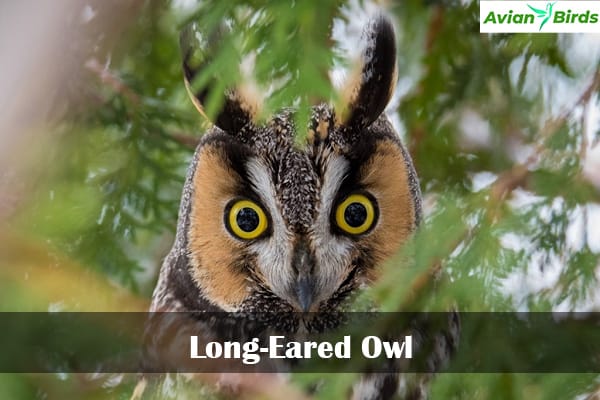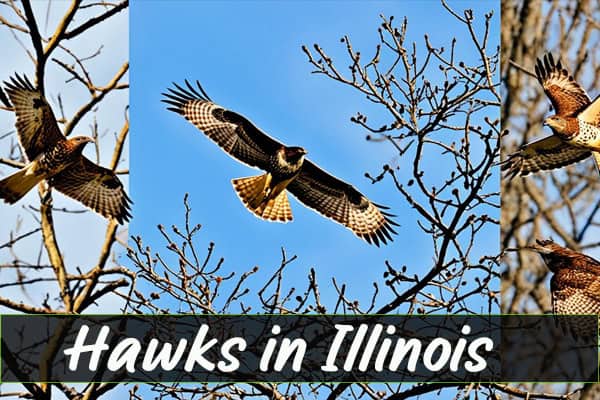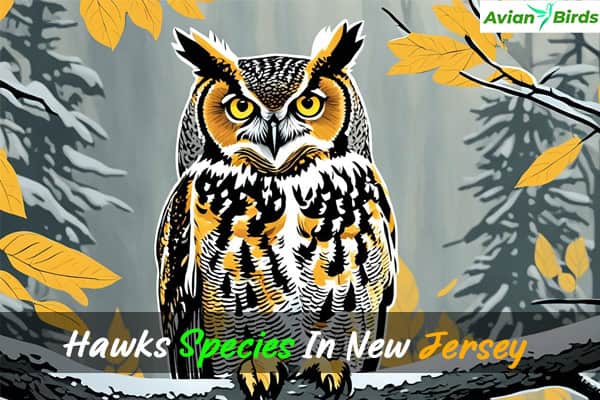8 Species of Owls in South Carolina ( ID Guide With Pictures)
Get ready to dive into the fascinating world of owls in South Carolina! This state, located on the southeastern coast of the United States, is home to a wide range of habitats. These habitats support nine owl species, making it perfect for these raptors. But, did you know that only four of these owls stay all year? The other five come to visit during the winter.
Let’s take a closer look at the 8 most common owl species in South Carolina. Each one has its own unique look, behavior, and role in the state’s ecosystem.
Owl in South Carolina
South Carolina is home to many owl species. There are four that live here all year and five that visit during the winter. These include the Barred Owl, Barn Owl, Eastern Screech Owl, and Great Horned Owl. They live in different places across the state.
These birds of prey are important for South Carolina’s nature. They help keep the number of small mammals, birds, and other animals in check. This balance is key for the health of the ecosystems.
Some owls come to South Carolina from the north during the winter. These include the Short-eared Owl, Snowy Owl, and Long-eared Owl. They are less common here but offer a chance for bird lovers to see them.
1. Barred Owl
In South Carolina, the Barred Owl (Strix varia) is a common sight. It’s a big owl with a round head and no ear tufts. It has a special tail and looks with its mottled brown back and buff-colored belly with streaks. You can easily spot it by its call, which sounds like “Who cooks for you? Who cooks for you all?”

Physical Characteristics and Identification
The Barred Owl can reach up to 19 inches tall and has a wingspan of 43 inches. These owls can live up to 26 years and 7 months, making them quite long-lived. They usually stay close to where they were first found, moving less than 6 miles away.
Habitat and Nesting Behavior
Barred Owls like old forests near swamps and streams. They nest in cavities or stick nests, or even in nest boxes high up in trees. The females lay up to five eggs and keep them warm for about 33 days.
Hunting Techniques and Diet
Barred Owls hunt at night but can also be seen during the day. They eat small mammals, birds, reptiles, amphibians, and insects. Despite their size, they can be preyed upon by the Great Horned Owl.
2. Barn Owl
- Wingspan: 100 to 125 cm
- Length: 32 to 40 cm
- Mass: 400 to 700 g
- Lifespan: 15 years
The Barn Owl (Tyto alba) is a fascinating bird found in South Carolina. It stands out with its white face and underside, and a back of cinnamon and grey. Its heart-shaped face and dark eyes make it a unique sight.
In South Carolina, you’re most likely to see barn owls in cities and open areas. They live in deserts, farms, grasslands, marshes, suburbs, and cities. They nest in buildings, nest boxes, trees, cliffs, river banks, and caves, using pellets they regurgitate.

Barn owls mainly eat small mammals like mice, voles, lemmings, bats, and rabbits. They also hunt birds like meadowlarks and starlings. Voles and rice rats are big parts of their diet, making up 63% and 19% respectively.
Even though they live in open areas, barn owls are a concern in South Carolina. This is because their homes, farmland, and forests are disappearing. The state’s nest box program started in the early 1990s to help them. It has been successful, with 86% of monitored nest boxes occupied.
3. Eastern Screech Owl
- Wingspan: 48 to 61 cm
- Length: 16 to 25 cm
- Mass: 121 to 244 g
- Maximum Lifespan: 14 years
The Eastern Screech Owl (Megascops asio) lives in South Carolina’s woods. It’s the smallest owl that breeds in the state. It looks like a small version of the Great Horned Owl. They have unique ear tufts, yellow eyes, and striking patterns on their feathers.

Appearance and Distinguishing Features
Eastern Screech Owls have two main looks – gray and rufous. The gray ones have dark streaks and light bars on their belly. The rufous ones are rusty-brown and don’t have the same bars. Both types have short ear tufts and bright yellow eyes.
Nesting Habits and Preferred Habitats
These owls live in many places, from city woods to open forests. They don’t build nests but use tree holes, old nests, and buildings instead. This lets them live close to people in South Carolina’s varied lands.
Feeding Behavior and Prey
The Eastern Screech Owl is a great hunter. It eats small birds, mammals, reptiles, insects, and crayfish. They sit and wait for food, using their sharp night vision and hearing to catch prey. Their varied diet shows how well they adapt in South Carolina.
4. Great Horned Owl
- Wingspan: 101 to 145 cm
- Length: 46 to 63 cm
- Mass: 910 to 2500 g
- Lifespan: 28 years
The Great Horned Owl (Bubo virginianus) is a true icon of the South Carolina wilderness. It’s the largest breeding owl in the state, with a length of 22 inches and a wingspan of up to 44 inches. It’s known for its distinctive feathered “horns”. This owl is a powerful hunter, taking down prey much bigger than itself.

Iconic Appearance and Vocalizations
This owl has greyish-brown feathers, a reddish-brown face, and a white throat patch. Its eyes are piercing yellow. Its voice is deep and carries far at night, with five or six hoots.
Habitat Preferences and Nesting Sites
Great Horned Owls live in many places in South Carolina, like forests, wetlands, and even cities. Also, They nest in old nests or tree cavities. Sometimes, they use cliff ledges, caves, or old buildings.
Hunting Prowess and Varied Diet
These owls hunt a lot of animals, from small rodents to larger birds and reptiles. They wait in a high spot, then fly fast to catch their prey.
The Great Horned Owl is amazing and shows how diverse South Carolina is. By learning about it, we can help protect its home and keep it around for the future.
5. Short-eared Owl
- Wingspan: 85 to 103 cm
- Length: 34 to 43 cm
- Mass: 206 to 475 g
- Lifespan: 12 years
The Short-eared Owl (Asio flammeus) is a medium-sized owl that visits South Carolina in the winter. These birds stand out with their unique looks and behaviors. They are different from other owls in the state.

Distinctive Features and Behavior
Short-eared Owls have a round head and smooth-tipped wings. They are smaller than the Great Horned Owl, measuring 13 to 17 inches long and with a wingspan of 33.5 to 40.5 inches. Their face is pale with yellow eyes framed by black, and their breast is heavily streaked brown. They also have a buffy chest and belly.
Their underwings have a special mark near the wrist and a pale patch in the primaries. This makes them easy to spot in the sky.
These owls are active during the day, especially at sunrise and sunset. They hunt low over short vegetation. Their stiff wing beats make their flight look mothlike.
Winter Visitor to South Carolina
In South Carolina, the Short-eared Owl is a rare winter visitor. They are mostly seen in coastal marshes. These owls like open areas like grasslands, prairies, and farmlands.
They can be found in places like Congaree National Park, J. Strom Thurmond Lake, Francis Marion National Forest, Savannah National Wildlife Refuge, and Clemson Experimental Forest.
Even though they are rare, these owls are important to the ecosystem. They mainly eat small mammals like voles. Birdwatchers and nature lovers should look out for these unique winter visitors. It’s a chance to see their special hunting ways.
6. Snowy Owl
- Wingspan: 126 to 145 cm
- Length: 52 to 71 cm
- Mass: 1600 to 2950 g
- Lifespan: 24 years
As the colder months come, we look forward to a special visitor in South Carolina – the snowy owl (Bubo scandiacus). These big, white owls sometimes come down from their Arctic homes. They look for food in our state.

It’s easy to spot snowy owls. They have white feathers, bright yellow eyes, and almost no ear tufts. Females and young ones might have some dark spots. But they still look amazing and white.
Snowy owls like open places like coastal dunes, prairies, and big fields. In South Carolina, they’ve been seen in places like Francis Marion National Forest, Congaree National Park, and the ACE Basin National Wildlife Refuge. They eat small mammals and birds, including ducks and songbirds.
When snowy owls come to South Carolina, it’s often because they’re looking for food. This year is the third time in a row they’ve done this. Most of the owls seen are young ones. Seeing them is exciting, but we should let them rest and get ready to go back north.
7. Long-eared Owl
- Wingspan: 90 to 100 cm
- Length: 35 to 40 cm
- Mass: 220 to 435 g
- Lifespan: 27 years
The Long-eared Owl (Asio otus) is a fascinating bird that visits South Carolina in winter. These owls get their name from their long ear tufts. They are not often seen, making them a thrill for bird lovers. They have brown-grey feathers, whitish underparts, orangeish faces, and bright yellow eyes.

Appearance and Identification Tips
The Long-eared Owl stands out with its slender body and long wings. Its ear tufts can be raised or lowered. This makes them easy to spot. They blend into their surroundings when perched, but their unique flight pattern helps identify them.
Rare Winter Visitor in the State
Long-eared Owls are not common in South Carolina but visit in winter. They like forests with open areas for hunting small mammals and birds. Look for them in Congaree National Park and around Clemson University.
8. Burrowing Owl
- Wingspan: 55 cm
- Length: 19 to 25cm
- Mass: 150 g
- Lifespan: 10 years
In South Carolina, the Burrowing Owl (Athene cunicularia) is a rare and interesting bird. It lives in underground burrows, not in trees like most owls. It takes over the dens of other small mammals.

This owl is small, measuring 7.5–9.8 inches long with a 21.7-inch wingspan. It has long legs, a round head, and a short beak. These features help it live in open areas like grasslands and prairies.
Seeing Burrowing Owls in South Carolina is rare, but they’re important for the environment. They eat insects and small rodents, which helps control pests. But, they face threats like car accidents, poison, and losing their homes. That’s why they’re protected at state and federal levels.
For birdwatchers and nature lovers, finding Burrowing Owls is exciting. They often sit on fence posts or dirt mounds, watching for food. Their look and how they live make them a special part of South Carolina’s bird life.
When you’re in South Carolina’s grasslands, prairies, or farms, look for the Burrowing Owl. It’s a sign of the state’s rich bird life and beauty.
Owls Found In Other Different Regions
Final Thoughts
South Carolina is home to many owl species, including four that live here and five that visit during the winter. The Great Horned Owl and the Burrowing Owl are just a few of these amazing birds. They help keep the ecosystem balanced by controlling the numbers of small mammals, birds, and other prey.
Learning about the seven most common owl species in South Carolina is exciting for nature lovers and bird fans. Whether you’re birdwatching or just listening to their night calls, these owls make a big impact.
As we end our look at South Carolina’s owls, we see how important it is to protect them. By understanding their role in our ecosystem, we can help ensure they continue to thrive. Let’s work together to keep these incredible birds safe for the future.







